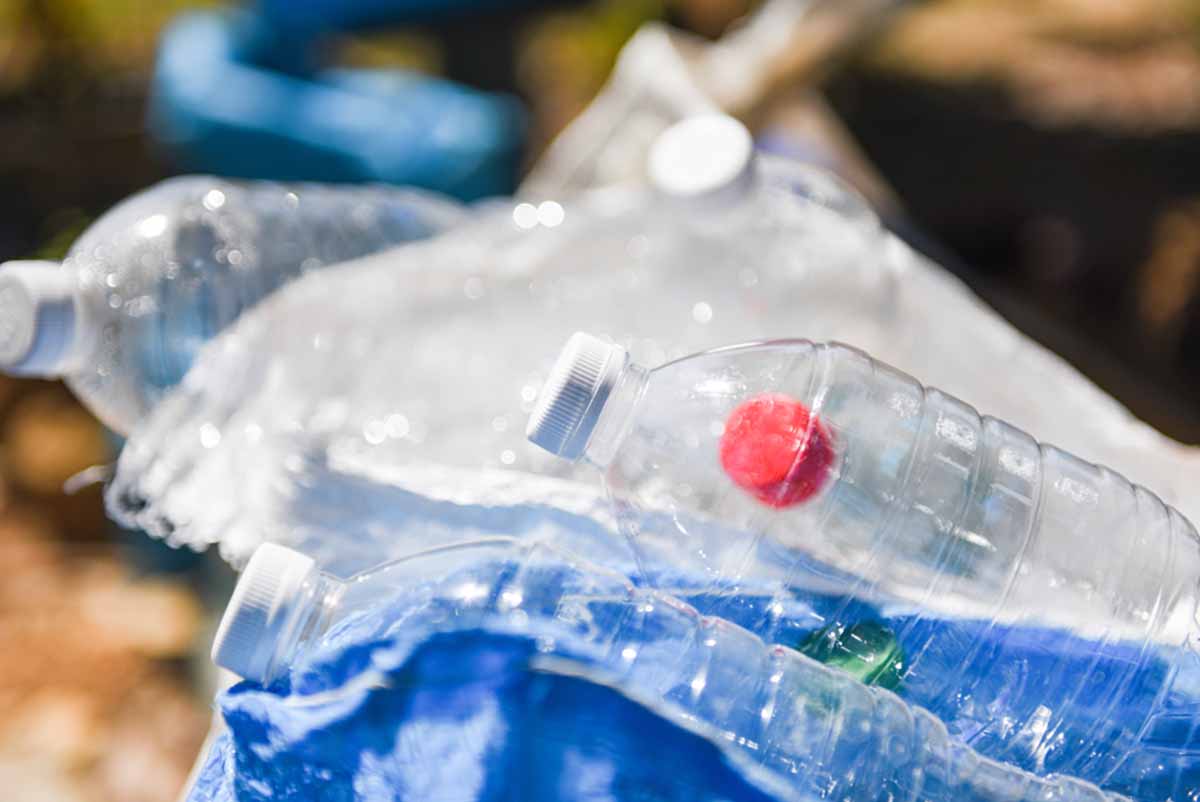
Of the nine states for which data is available, only two showed meaningful increases in their container redemption rates. | Poring Studio/Shutterstock
Most states with deposit return systems saw static or reduced bottle redemption rates in 2022, according to a deposit advocacy organization.
New data from the Container Recycling Institute (CRI) showed that 2022 beverage container redemption rates in seven of the nine U.S. states with available data on their bottle bills were either lower than or remained within 1 percentage point of 2021 rates.
Oregon and Maine are the only states that saw a noticeable increase. Iowa did not have current data available, according to a press release.
Susan Collins, CRI president, said in the press release that stagnant or falling redemption rates “point to the need for program modernizations – such as higher container deposit amounts, coverage of more beverage types and additional convenient options for consumers to return bottles and cans.”
“Several bottle bill states still do not include deposits on noncarbonated drinks, including bottled water – sales of which have skyrocketed since the deposit return systems were implemented in the 1970s and ’80s,” she added.
Digging into the data
From 2021 to 2022, redemption rates in Michigan and California crept up 1 percentage point each, to 76% in Michigan and 60% in California. (The California Department of Resources Recycling and Recovery reports a 70% redemption rate for 2022 and a 68% rate for 2021 because it includes containers returned through curbside collection. The state is unique in that methodology, so CRI adjusts the rate in its reporting.)
New York and Massachusetts stayed the same at 70% and 38%, respectively, while Connecticut fell 1 percentage point to 45%.
Vermont saw a decrease of 6 percentage points to 72% and Hawaii a decrease of 4 percentage points to 58%.
In Oregon, the rate increased 5 percentage points to 86% and in Maine it jumped 3 percentage points to 78%.
Collins noted that the overall U.S. recycling rate is 24% for beverage containers not on deposit, and “even outdated deposit return systems perform better than non-deposit ones.”
Future increases anticipated
Looking forward, Collins noted that recent program modernizations in California and Connecticut should eventually lead to increases in the number of bottles and cans redeemed.
California added deposits for wine and distilled spirit containers in 2022 with SB 1013 and provided nearly $400 million in new spending for the bottle bill program. More than half a billion additional bottles and cans will be recycled annually with the changes, the press release noted.
There’s another California bill in play this year to add fruit and vegetable juice containers to the deposit program. If passed, SB 353 would add a deposit to an estimated 188 million new containers, in addition to the 18.4 billion containers already covered by the program, the press release stated.
In 2021 in Connecticut, SB 1037 added deposits to non-carbonated beverages, hard cider and malt-based hard cider effective Jan. 1, 2023, provided a handling fee increase for retailers and redemption centers, and will increase the deposit amount on eligible containers from 5 cents to 10 cents effective Jan. 1, 2024.
The press release noted that when Oregon increased its deposit from 5 cents to 10 cents, the redemption rate climbed 22 percentage points in three years.
Maine enacted bottle bill reform this legislative session. LD 134 increased the handling fee for redemption centers and LD 1909 will streamline the container sorting process, establish a cooperative of beverage manufacturers to coordinate the transportation of and payment for materials, and put unredeemed deposits in a fund for program improvements instead of sending them to beverage companies.
Vermont and Massachusetts both have program modernization legislation in the works this session, as well.
Vermont’s Gov. Phil Scott vetoed H.158, which would have expanded deposit coverage to most beverage types, but the veto could be overturned by the General Assembly when it reconvenes in January.
Citing bottle bill momentum in other parts of the world, Collins said “all signs now point to a national bottle bill in the U.S. becoming a reality.”
“But in the meantime, it’s critical to work on the passage, implementation and expansion of state bottle bills to improve recycling rates and further contribute to increases in circularity,” she added.
A version of this story appeared in Plastics Recycling Update on Aug. 29.

